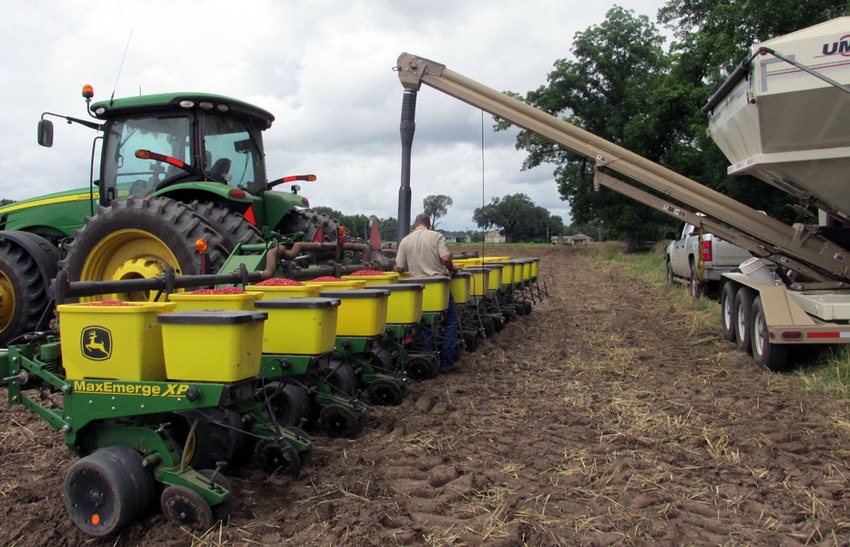February 22, 2015

Variety selection has been fairly easy for Southeastern peanut producers in recent years – there’s Georgia-06G, and then there’s more Georgia-06G.
But times are changing, and with each new production season growers have more to choose from in terms of varieties.
So what factors should be considered when deciding what to plant? There are several, says University of Georgia peanut agronomist Scott Monfort, including yield and grade potential, field history for diseases and nematodes, whether your fields are irrigated or non-irrigated, the availability of high-oleic contract premiums, and maturity.
Monfort discussed these and other planting considerations at the recent Georgia Peanut Farm Show in Tifton.
“With peanut acres likely increasing due to the structure of the current barm bill and suppressed prices of other commodities, growers need to take all of these things into account before selecting a cultivar,” says Monfort.
The cultivars commercially available this year are: Georgia-06G, Georgia Greener, Georgia-12Y, Georgia-09B, Tifguard, Florida-07, FloRunTM ‘107’, TUFRunnerTM ‘727’, and TUFRunnerTM ‘511’.
As in the last few years, a majority of the peanut acreage produced for seed in 2014 was planted in Georgia-06G. Seed supply of Georgia Greener, Georgia-12Y and TUFRunner ‘511’ will be limited.
Based on figures from the Georgia Crop Improvement Association, the largest percentage of acreage planted (83 percent) in 2014 for seed production was Georgia-06G. That was followed by Tifguard, Florida 07, Georgia-09B, FloRun ‘107’, and TUFRunner ‘727’ at 5, 3.6, 2.8, 1.6 and 1.5 percent, respectively.
“Based on this report, we could expect at least 85 to 90 percent of the planted acreage in the Southeast U.S. in 2015 to be planted among those six cultivars.
For the most part, says Monfort, cultivar selection has been an easy decision over the last few years, with Georgia-06G being the obvious choice.
“Very few cultivars have made their mark like Georgia-06G in overall performance until recently,” he says. “Growers now have more choices of high yielding and disease-resistant cultivars, including high-oleic cultivars, from which to select.”
Georgia-12Y, says Monfort, is one of the first runner cultivars released with superior resistance to both white mold and tomato spotted wilt virus compared to other previously released runners and is available for limited acres in 2015.
Another factor that may be important to consider in 2015 as crop prices continue to be suppressed is seed size, he adds. “In the last five to seven years, the seed size of popular cultivars has increased, causing growers to plant in excess of 150 pounds per acre compared to that of Georgia Green at 110 pounds per acre to get the same six seed per foot. The good news is seed size has decreased in many of the newer cultivars available in 2015, allowing growers a chance to trim some of their input costs.”
Maturity range is another important attribute to consider while selecting a cultivar, says Monfort.
“Georgia Greener, Georgia-06G and Tifguard have what we call the ‘normal’ or medium maturity range of approximately 135 to 140 days after planting. Georgia-12Y, Florida-07, TUFRunner ‘727’, and TUFRunner ‘511’ all mature about seven to 14 days later than Georgia Greener. Knowing and understanding maturity in 2015 will be extremely important with an increase in acres and a potentially expanded planting window.”
Barry Tillman, peanut plant breeder with the University of Florida, agrees that seed size varies greatly among varieties currently available and among those that will become available in the near future.
It’s important, says Tillman, to consider all factors when selecting a peanut variety, especially in an era of low pries where small benefits can add up for farmers.
“FloRun ‘107’, Georgia-09B, and Georgia Greener and Georgia-13 have the smallest seed, meaning more seed per pound. Compared to planting varieties with larger seed such as Georgia-06G or Florida-07, planting costs can be reduced by planting one of the smaller-seeded varieties,” says Tillman.
Disease resistance is also an important factor in comparing varieties, says Tillman.
“Those with good resistance to leaf spots and white mold such as TUFRunnerTM ‘727’, Tifguard, and Georgia-12Y can produce well even when sprayed with the less expensive, protective fungicides such as chlorothalnil and tebuconazole. Other varieties with more susceptibility to leaf spot and/or white mold likely will benefit from fungicides with better disease control attributes which are also more expensive,” he says.
Tillman notes that for the first time, the majority of the varieties in the University of Florida test this past year were high oleic. “Over the past two years, some contract premiums have been offered for high oleic production.”
About the Author(s)
You May Also Like




